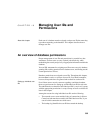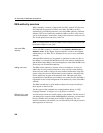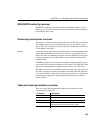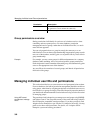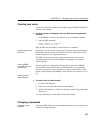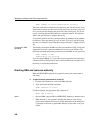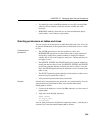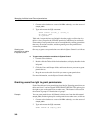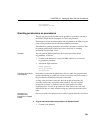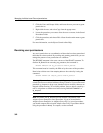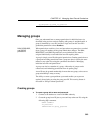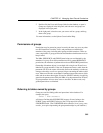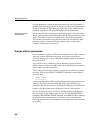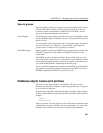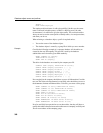
CHAPTER 10 Managing User IDs and Permissions
361
TO M_Haneef
WITH GRANT OPTION
Granting permissions on procedures
There is only one permission that may be granted on a procedure, and that is
the EXECUTE permission to execute (or CALL) the procedure.
Permission to execute stored procedures may be granted by the DBA or by the
owner of the procedure (the user ID that created the procedure).
The method for granting permissions to execute a procedure is similar to that
for granting permissions on tables and views, discussed in “Granting
permissions on tables and views”.
Example
You can grant M_Haneef permission to execute a procedure named
my_procedure, as follows:
1 Connect to the database as a user with DBA authority or as owner of
my_procedure procedure.
2 Execute the SQL statement:
GRANT EXECUTE
ON my_procedure
TO M_Haneef
Execution permissions
of procedures
Procedures execute with the permissions of their owner. Any procedure that
updates information on a table will execute successfully only if the owner of
the procedure has UPDATE permissions on the table.
As long as the procedure owner does have the proper permissions, the
procedure will execute successfully when called by any user assigned
permission to execute it, whether or not they have permissions on the
underlying table. You can use procedures to allow users to carry out well-
defined activities on a table, without having any general permissions on the
table.
Granting user
permissions on
procedures in Sybase
Central
One way to grant a user permissions on a table in Sybase Central is as follows:
❖ To grant user permissions on procedures in Sybase Central:
1 Connect to the database.



